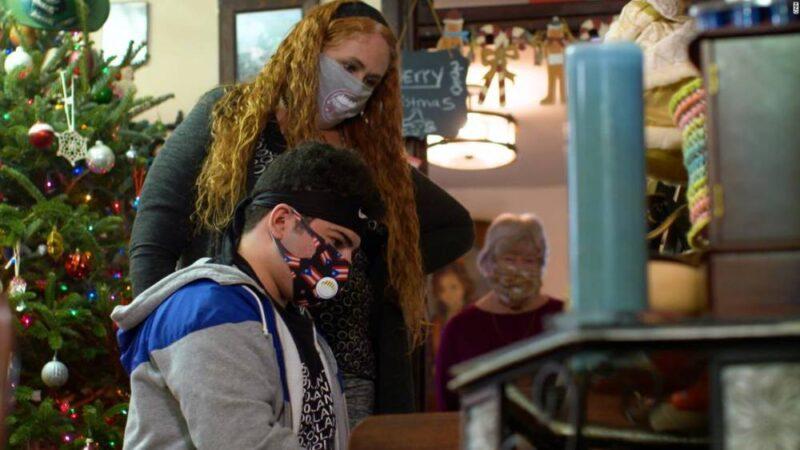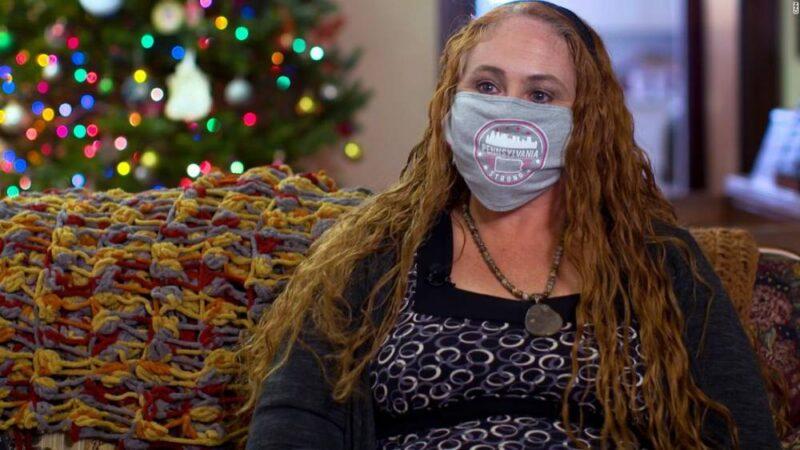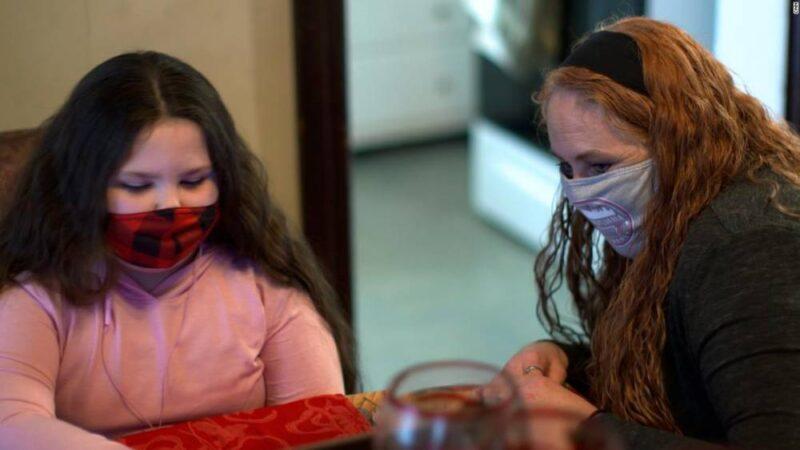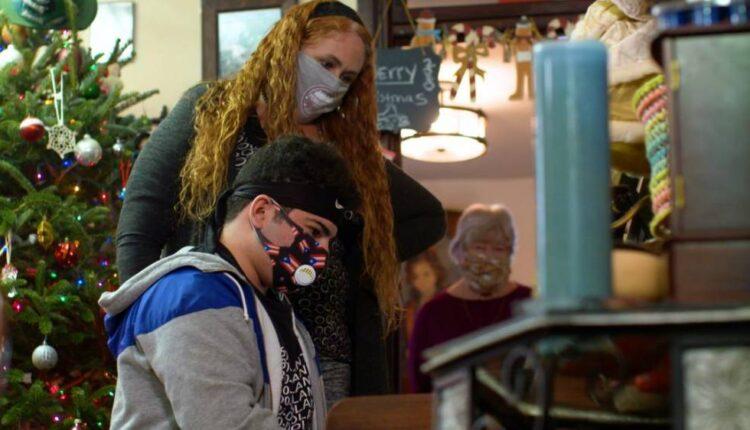(CNN)Angela Kearney’s living room is filled with Christmas decorations. The lights on her tree illuminate her most prized ornaments. The room looks festive, but the mood is filled with dread.
Kearney has been furloughed from her job as a paralegal since March and her pandemic unemployment benefits run out in January, like they will for 12 million other Americans — unless Congress extends them. The mother of five, who still has three children living at home, currently receives $300 a week in unemployment benefits — which she says is not enough to cover her bills.

Angela Kearney watches her son Christian 14, play the piano.”I have to take the bills, throw them up and pick ones and hope they total the amount that I have,” said Kearney. Last week, 853,000 Americans filed for first-time unemployment, the highest level since September. These record-setting numbers are being notched as Congress has spent months negotiating a stimulus bill that could bring critical relief to millions of Americans like Kearney. Read MoreYet Republicans and Democrats are stalled on how to craft certain measures, like liability protections for companies and funding for state and local aid, leaving many struggling Americans worried they won’t see any relief anytime soon.
‘A new class of poverty’
Eight million Americans have fallen into poverty since May, according to Columbia University. “40% of US households pre-pandemic could not afford a single $400 emergency,” said Dr. Amy Baker, assistant professor of social policy at the University of Pennsylvania. “What I fear is that… we’re basically creating a new class of inequality and a new class of poverty where people will not be able to recover.” Kearney says it will take her years to get back to where she was financially before the pandemic. Her credit cards are in default and, if her unemployment expires next month, she will be forced to forfeit her car. The Covid Divide: The pandemic has plunged some into poverty, and boosted savings for othersKearney was born with clubfoot, a disability that makes it hard to walk. Over the last ten years, she’s had both hips and knees replaced — all while putting herself through school to become a paralegal. At one point, she was even homeless (her children lived with her sister during that time), but last December she landed a job at a law firm making $55,000 a year. “That is more money than I’ve ever seen in my life,” said Kearny, who is now 52. “I promised [my kids] they would be normal children… and then the pandemic. And I can’t keep those promises anymore.”

Kearney in her Pottstown, Pennsylviania, living room. Kearney and her husband, who is currently unemployed, are renting a home in Pottstown, Pennsylvania, using a voucher. She promised her children she would buy a new home, but it will have to wait. Now there isn’t enough money to cover the monthly bills. And the ones Kearney has been able to put aside because of federal protections will now start coming due in the next month or two. Kearney says she has $63,000 in student loans, which she will have to start paying again in February, when the student loan forbearance ends. The Center for Disease Control and Prevention’s eviction moratorium is only in effect through the end of this month, then the rent will come due.In the meantime, she wants to make sure her children have a nice Christmas — so Kearney is prioritizing paying the electric bill which will keep the lights on and the Christmas spirit alive. “Santa will be here,” said Kearney. “Because they’re the most important thing in the scenario. They are, the children,” she said as she pointed to them in the room.
Stretching food stamps further
In the kitchen, Kearney organizes her children’s meals for the day. They are all home and virtual learning. Their school provides pre-packaged breakfast, lunch and snacks, a vital lifeline for Kearney who is left with just $400 a month in food stamps to feed her family. Is it enough to feed them all? “It has to, right?” she said. “I can pretty much make something out of nothing.”

Kearney helps her daughter Katelynn, 9, with her virtual learning.Roughly 50 million people are facing food insecurity in this country — many of them for the first time in their lives. Feeding America, the largest hunger relief group in the US says it will need 8 billion meals in the next year to feed them. “One of the things that we started noticing very quickly was that the people who were turning to us for help, we didn’t recognize them,” said Claire Babineaux-Fontenot, CEO of Feeding America. “About 40% of the people who right now are turning to food banks for help around the country are people who never before relied upon the charitable system.” 'Tired of being sad.' The financial stress from Covid is taking an emotional tollKearney had been reliant on food stamps for years, but last year she was finally able to get her family off of them after she graduated from college and got her job as a paralegal. Then the pandemic forced her to go back on the program.
“A lot of it was determination on my part to climb up this mountain — and [then] we got shoved off the mountain,” she said.Laura Dolan contributed to this story.
Source: edition.cnn.com

